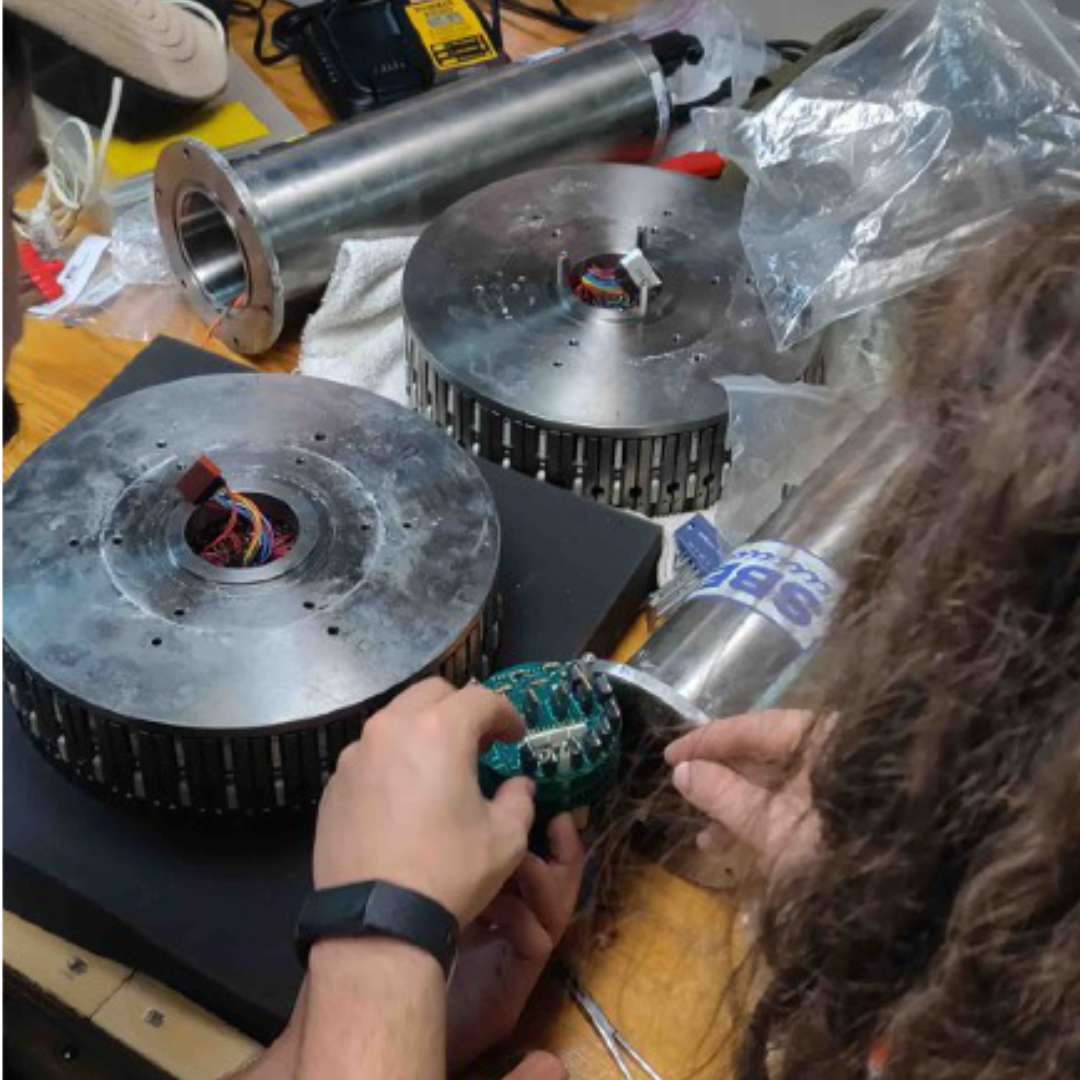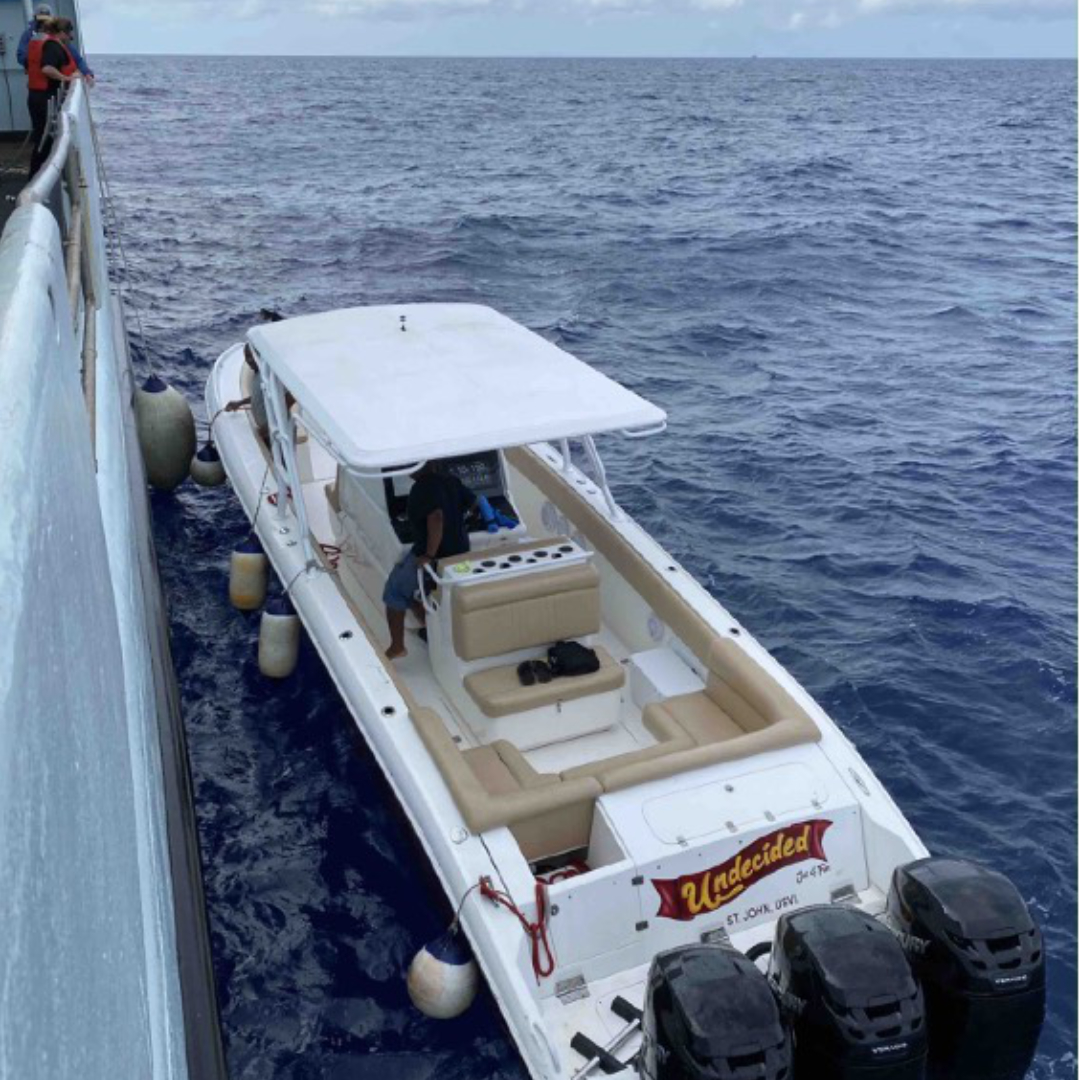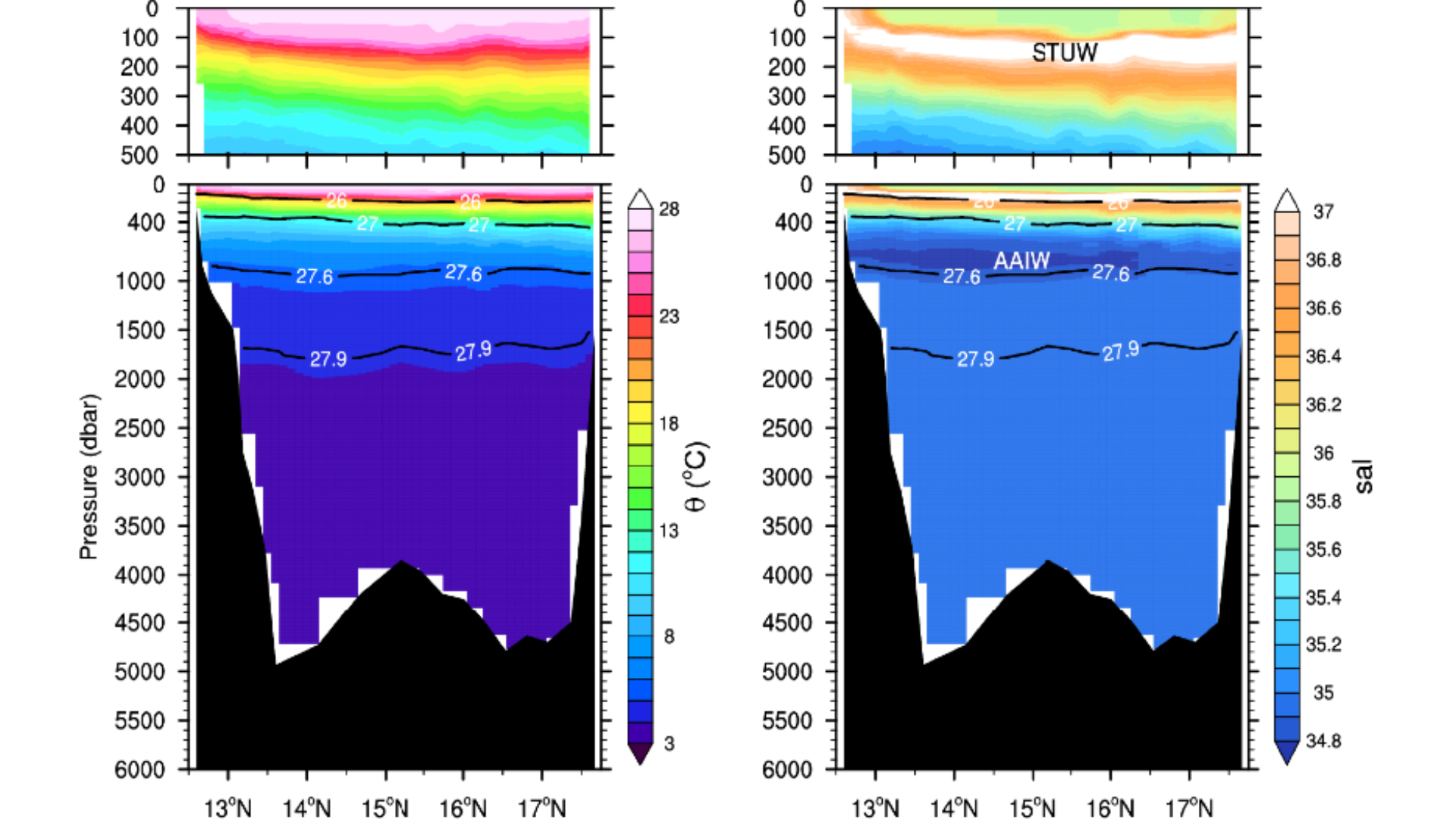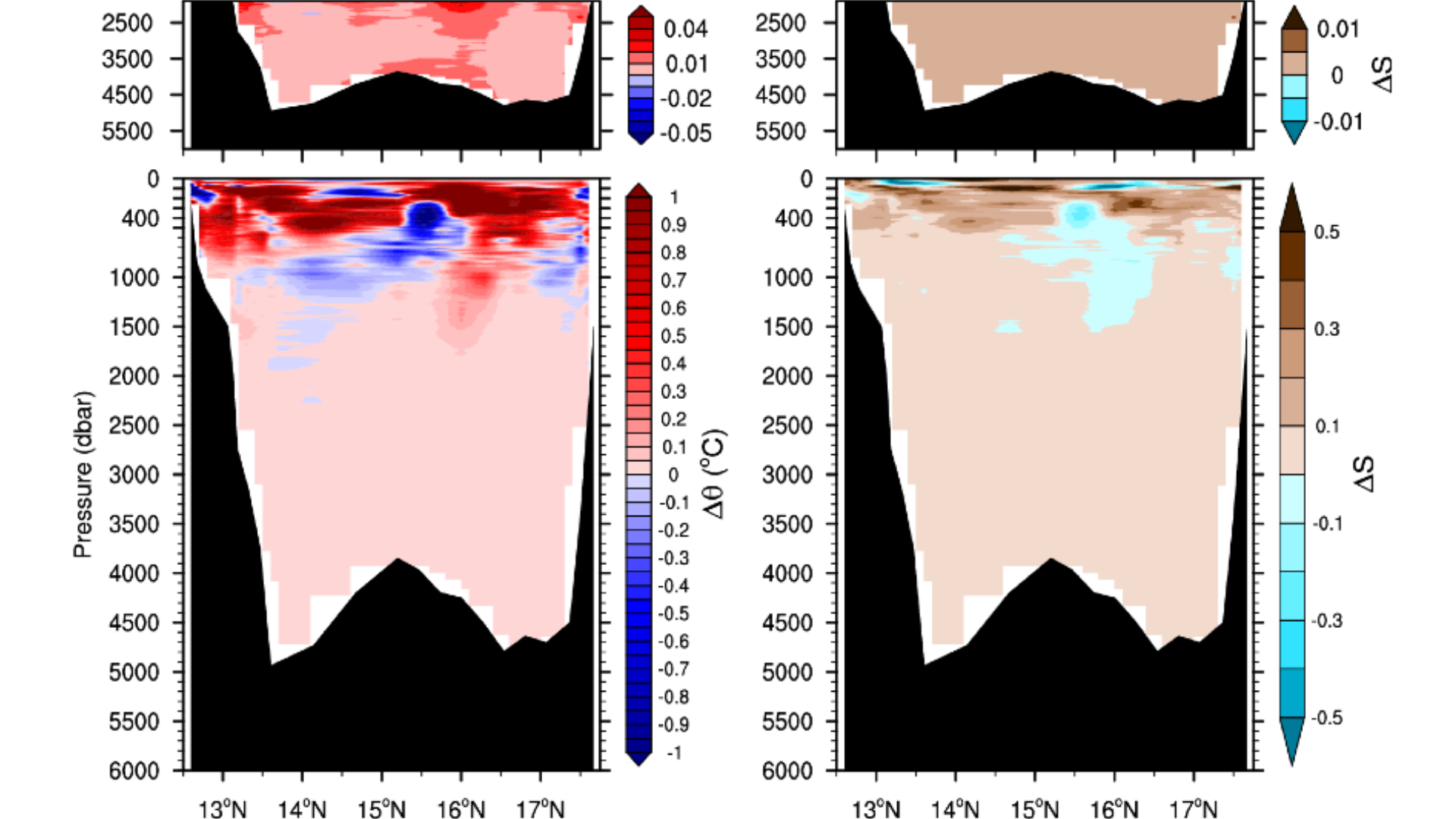May 3, 2021
A22 Weekly Cruise update #2
We are completing our second week at sea and are halfway through A22. Right now, we are on station 50! Time has passed in the blink of an eye, but it also feels like living forever on the same day: deploy-recover-sample-deploy. In this eternal loop, the high point of our days has been (without a doubt) the delicious meals offered on R/V Thompson. On Sunday, May 2nd, we had a barbecue. The weather was perfect and the sea totally flat – impossible for it to be better. Our team has been working as a machine, and has occupied an impressive 28 stations (#23-50; blue dots in the map). We started south of Puerto Rico (PR) in a frenetic rhythm. To help the lab analysis during these close-spaced stations (< 10 nm), we waited 2-3 hours before deploying the rosette at the next station. We then moved eastward to occupy two stations at the Anegada Passage where intermediate and deep water masses, Antarctic Intermediate Water (AAIW) and North Atlantic Deep Water (NADW), are able to enter the Caribbean Sea. From there, we sailed towards St. Thomas (our departing port) to pick up a CTD block that arrived after we departed. A small boat made a quick delivery, and then we sailed towards PR. For about 10 refreshing hours, we didn’t have any station to occupy. We also got a cell phone signal, which many of us enjoyed. North of PR, we went back to our close-spaced station pace until the PR Trench, where we did our four deepest casts. Although the PR trench is 7900 m deep (or more), instrument depth ratings limited our casts to to 6000 m. Sadly, no bottom approximation. After the PR trench, our stations became 30 nm apart (3-4 per day) again. As the sea and weather continue to treat us well, we are ahead of schedule, further aided by our transit speed of 13 knots!

Fixing the CTD carousel. Photo: Ali Siddiqui

Boat delivering the CTD block near St. Thomas. Photo: Jesse Anderson
Issues
We have also faced a few problems during the second week. There were typical at sea issues here and there: unfired bottles (mostly bottle #3), a broken O-ring, a missed target depth, wrong numbers in the sample log. Except for the firing problem, all others were sporadic and immediately fixed. To address the firing problem, a few stations ago our rosette underwent major surgery. A carrousel removed on the previous leg was repaired and installed. We hope that the firing issue will not happen anymore. So far all 36 bottles are now firing without problems. Station 39 at the PR trench was our scariest moment however. One of our scientists badly hurt a finger while preparing the rosette. The pain was incommensurable and felt by all. The station was delayed until we had word that there was no need for a medical evacuation. Fortunately, everything is well now. After this incident, we met with all CTD watch-standers to remind everybody that health is the most important thing. Ten or fifteen minutes more to carefully prepare the rosette will not affect our outcome. We have a few weather days to spare. Breaks, when tired, are also essential. We are not in a rush is now our new motto.

Potential temperature and salinity distribution at A22 2021 (stations 1-29) from CTD data by Viviane Menezes.
A happy moment
We have planned for many days to bring foam cups to the deep sea, the deepest on our track over the Puerto Rico trench. The science party and crew have decorated many cups during the week– all lively and colorful. Some foam heads also showed up. We have some real artists here! These cups were sent down to the depths on our second cast over the trench, station 40. While this was not over the deepest part of the trench, given that our instruments are rated to only 6000 m, it is equivalent. When cups came back to deck, a mystery surrounded us. An orange octopus from one of the crew members disappeared. Did it fall out of the bag (there was a hole in one of them)? But why only one? Did somebody take it? Would it be inside another cup? — We are still trying to determine.

Potential temperature and practical salinity differences (2021-2012) by Viviane Menezes.
A bite of science
Now that stations are more spaced and rhythm is not so frenetic, we had time to look at the data we collected in the Caribbean Sea (#1-29). The water mass distribution is similar to the previous occupations. No significant change in properties in the deep ocean was observed when compared to 2012. But, there was a small warming and salinification over the entire basin at those depths. Between 100-300 m, the saline Subtropical Underwater (STUW with salinity > 37) was easily spotted in all stations in the Caribbean. The fingerprint of AAIW (low salinity and low oxygen in the North Atlantic) was also present between 600-1000 m. As in 2012, the AAIW signature was intensified near South America. Below 2000 m, the water column was well mixed and weakly stratified in the Caribbean. No strong density front or mesoscale eddies could be identified in the density field at the upper layer. Between 1500-2500, slightly slanted isopycnals were noticeable near Puerto Rico, probably associated with the Caribbean deep cyclonic gyre described by Joyce et al. (2001) based on the 1997 A22 occupation.
Best from the Caribbean,
Viviane Menezes (Chief Scientist)
Jesse Anderson (co-Chief Scientist)
